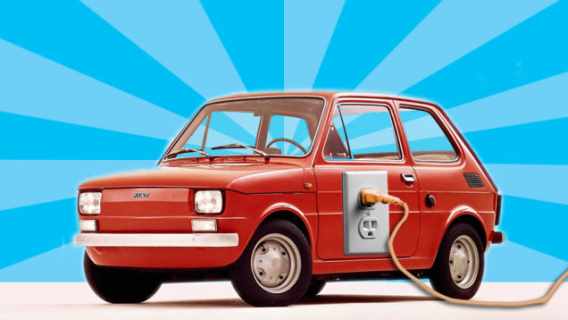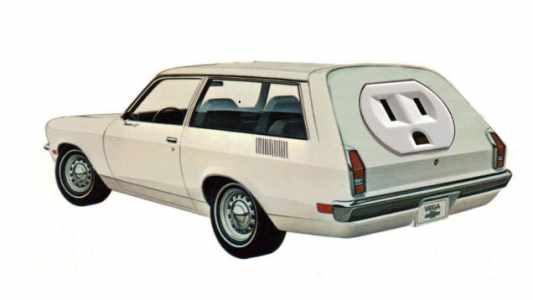By : Jason Torchinsky
How To Power Your Home
Even if you’re not directly in the path of Superhyperthunderricane Sandy, there’s still a vast number of people who may be affected by losing electrical power. And, as we know, living without electricity means you’re about six hours away from reverting to cannibalism, wearing skulls, and building a Thunderdome.
Generators are great to have in these situations, but let’s face it, most of us don’t have one. Or do we? You know that sleek wheeled box you use every day to go to work and get chicken wings? It’s also a gasoline (or diesel) generator with seats and a radio. Let’s see how to use it to power your house.
In the interest of being inclusive, I’ll cover some very basic stuff here, so hardcore Jalops, please bear with me and feel free to mutter “duh” as often as you like.
The basic principle here is simple: your car generates electricity as it runs, to power the spark plugs and lights and engine computers and play your old mix tapes. The electricity is generated by your car’s alternator (or, in older cars, generator) driven by a belt off the engine. Since the car’s electricals run on DC (Direct Current, like a battery) and your house runs on AC (Alternating Current, like, um, everything in your house or an electric chair), we need a way to convert the DC from your car to AC in your house, and for that we use an inverter. Power Inverters are little boxes that plug into your cigarette lighter and handle the conversion. A number of new cars have them built-in nowadays, as well.
Method One: Acquire/Have a Power Inverter
This is by far the better way. Plug your inverter into your car’s cigarette lighter/12V outlet.
Many commenters are pointing out that on lots of cars, the wiring to the cigarette lighter/12V outlet is pretty flimsy, and could possibly cause a fire. That’s often true. So, to be safe, connection of the inverter directly to the battery is safest. You can use an accessory 12V outlet and clamp the leads to the battery terminals.
Then, connect an extension cord to the wall-style inverter outlet. There is some loss of power over long runs of extension cord, so try and park as close to your house or apartment as safe and run the shortest length of cord you can get away with to a power strip. Remember, many people die from carbon monoxide poisoning and electrocution so keep any cars in a well-ventilated area and use outdoor-approved equipment only.
What can the car and inverter actually power?
The inverter will convert your 12V DC from your car to 110V AC, but that doesn’t mean you can power your whole house like normal. That’s because your car’s not a power plant and because of Watts, Amps, and other electrical goodies. If we think of electricity as water, Amps are the rate of flow of the water, Voltage is the pressure, and Watts are sort of the combined flow and pressure. The output from your car will vary based on the inverter, but let’s use as an example a 440 Watt inverter, a type that’s usually available for under 40 bucks or so.
If we divide Watts by the Voltage, we’ll get Amps, which will help us figure out what we can run in our house. For a 440 W inverter, this would be:
440W / 110V AC = 4 Amps.
That’s not a lot of Amps, so that’s our limiting factor. Luckily, you can run a good number of things even with this low Amp rating. For example, a 60 Watt incandescent only uses about half an Amp. Your laptop’s wall power requirements should only be about an Amp. I just checked my 42″ Vizio LCD TV, and it only wants 2.5 Amps. Most modern electronic, solid-state devices don’t require much. So you could have a light, a laptop, and a TV. Not so different from many normal nights, right?
Some solid-state electronic devices, like a microwave oven, do demand much more power, often around 18 amps or so. You usually can’t run one of these from a consumer-grade inverter, so wrap your burrito in tinfoil and stick it on the exhaust manifold while your idling car is letting you watch old Perfect Strangers episodes from your emergency DVD stash.
Okay, what can’t I power with my car?
The tricky parts come when you want to power anything with a motor. Motors often drive compressors, and are used in some of the things you want to keep on the most, like an air conditioner or refrigerator. The issue is motors have different, higher demands when they’re getting started as when they’re up and running. For example, when my refrigerator is running, it draws about 6.5 Amps. You could find a car inverter that could handle that. The problem is when you start a fridge, it will draw anywhere from between 2-4 times the normal load amperage to get the motor started. That’s why your circuit breaker or fuse for your fridge is usually 20 Amps or higher— it needs to be able to handle that brief, intense start up.
So, unless your fridge has a starting crank, it unlikely you can run it from your car. There are special camper refrigerators that are designed for these lower-power situations, and those are a better bet. Along with refrigerators, washing machines’ motors usually draw too much current, and space heaters tend to be Amp hogs as well.
How long can I run my house from my car, then?
So, now that we generally know what kinds of things you can do with power from your car (play Angry Birds while cooking savory meat pies in an Easy-Bake oven and charging your Dustbuster) how long can you do this?
Let’s say that you have a full tank of gas in your car. If you’re just idling at, say, 1000 rpm, and the only load on the car is from the draw from the inverter, an average car should be able to run close to two days or so at idle. That’s the car in neutral and everything else off save for the inverter. All cars will vary, based on engine size and overall condition of the car. A smaller engine may need to run at a higher RPM than a larger one to maintain the power draw from the inverter, so a smaller engine isn’t always a guarantee of longer idle life in this case.
Not all cars’ alternators put out the same wattage, so your inverter selection— and hence the amount of power you can get— will depend on this.
Your car isn’t a purpose-built portable generator, but in an emergency, it’s not a bad stopgap measure at all. Just make sure you leave enough gas to actually drive the car if you need it. No amount of iPad game high scores and light-bulb-cooked frozen tofurkey dogs is worth being stuck in an evacuation zone.
Dammit, I don’t have an inverter. Am I screwed?

Only mostly! But not entirely. Your car is still generating 12V of power, and while not much in your house runs at that level, some things do. Car chargers for your phone and possibly laptop, many USB-powered devices (they’re 5V, but car chargers are common), and, most importantly, a surprising number of appliances designed to run off of 12V. Look at this page here— they have specially designed 12V microwaves, sandwich makers, frying pans— hell a whole kitchen! You’re most likely to find this stuff at real-trucker truck stops and possibly some camping stores.
So, if you can somehow get your hands on any of those, you could run a 12V line to your house to drive these. One way to do that is likely with jumper cables acting as the extension cord, and an accessory 12V outlet connected by its wires to the jumper cables. Be careful with doing this and only do it if you are familiar with how electricity works.
Good luck out there.
Other useful resources:
Survive Attack to Our Power Grid System (Weapon That Can Instantly End Modern Life in America)
Survival MD (Best Post Collapse First Aid Survival Guide Ever)
Backyard Innovator (A Self Sustaining Source Of Fresh Meat,Vegetables And Clean Drinking Water)
Blackout USA (EMP survival and preparedness)
Conquering the coming collapse (Financial advice and preparedness )
Liberty Generator (Build and make your own energy source)
Backyard Liberty (Easy and cheap DIY Aquaponic system to grow your organic and living food bank)
Bullet Proof Home (A Prepper’s Guide in Safeguarding a Home )
Family Self Defense (Best Self Defense Strategies For You And Your Family)
Survive Any Crisis (Best Items To Hoard For A Long Term Crisis)
Survive The End Days (Biggest Cover Up Of Our President)
Drought USA(Discover The Amazing Device That Turns Air Into Water)
SOURCE : jalopnik.com





